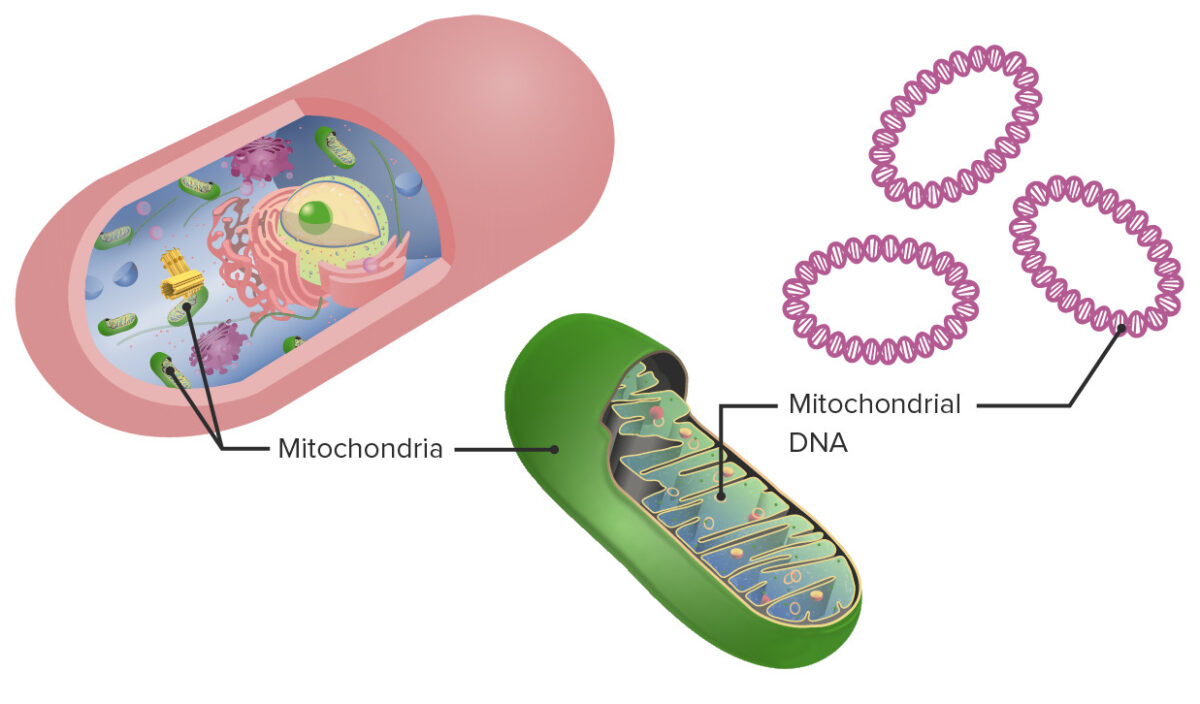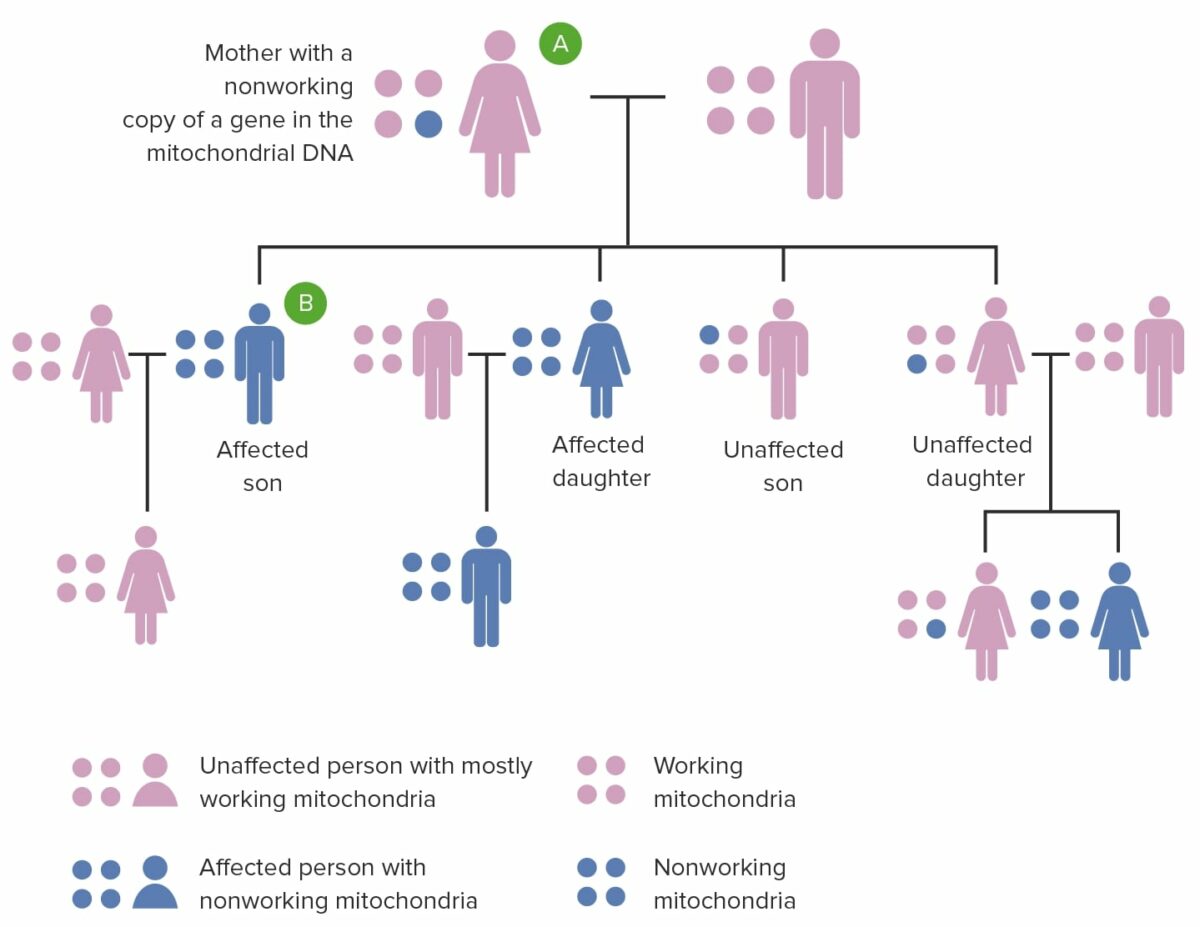Mitochondria Mitochondria Semiautonomous, self-reproducing organelles that occur in the cytoplasm of all cells of most, but not all, eukaryotes. Each mitochondrion is surrounded by a double limiting membrane. The inner membrane is highly invaginated, and its projections are called cristae. Mitochondria are the sites of the reactions of oxidative phosphorylation, which result in the formation of ATP. They contain distinctive ribosomes, transfer RNAs; amino Acyl tRNA synthetases; and elongation and termination factors. Mitochondria depend upon genes within the nucleus of the cells in which they reside for many essential messenger RNAs. Mitochondria are believed to have arisen from aerobic bacteria that established a symbiotic relationship with primitive protoeukaryotes. The Cell: Organelles are located in a cell’s cytoplasm and contain circular DNA DNA A deoxyribonucleotide polymer that is the primary genetic material of all cells. Eukaryotic and prokaryotic organisms normally contain DNA in a double-stranded state, yet several important biological processes transiently involve single-stranded regions. DNA, which consists of a polysugar-phosphate backbone possessing projections of purines (adenine and guanine) and pyrimidines (thymine and cytosine), forms a double helix that is held together by hydrogen bonds between these purines and pyrimidines (adenine to thymine and guanine to cytosine). DNA Types and Structure, called mitochondrial DNA Mitochondrial DNA Double-stranded DNA of mitochondria. In eukaryotes, the mitochondrial genome is circular and codes for ribosomal rnas, transfer rnas, and about 10 proteins. DNA Types and Structure ( mtDNA mtDNA Double-stranded DNA of mitochondria. In eukaryotes, the mitochondrial genome is circular and codes for ribosomal rnas, transfer rnas, and about 10 proteins. DNA Types and Structure). This DNA DNA A deoxyribonucleotide polymer that is the primary genetic material of all cells. Eukaryotic and prokaryotic organisms normally contain DNA in a double-stranded state, yet several important biological processes transiently involve single-stranded regions. DNA, which consists of a polysugar-phosphate backbone possessing projections of purines (adenine and guanine) and pyrimidines (thymine and cytosine), forms a double helix that is held together by hydrogen bonds between these purines and pyrimidines (adenine to thymine and guanine to cytosine). DNA Types and Structure exists separately from a cell’s nuclear genome Genome The complete genetic complement contained in the DNA of a set of chromosomes in a human. The length of the human genome is about 3 billion base pairs. Basic Terms of Genetics and is inherited solely through the maternal lineage—nonmendelian inheritance. Genetic mutations Genetic Mutations Carcinogenesis in mtDNA mtDNA Double-stranded DNA of mitochondria. In eukaryotes, the mitochondrial genome is circular and codes for ribosomal rnas, transfer rnas, and about 10 proteins. DNA Types and Structure give rise to various rare diseases such as Leber hereditary optic neuropathy Neuropathy Leprosy ( LHON LHON A maternally linked genetic disorder that presents in mid-life as acute or subacute central vision loss leading to central scotoma and blindness. The disease has been associated with missense mutations in the mtDNA, in genes for complex I, III, and IV polypeptides, that can act autonomously or in association with each other to cause the disease. Mitochondrial Myopathies) and myoclonic epilepsy Epilepsy Epilepsy is a chronic brain disorder marked by recurrent and unprovoked seizures. These seizures can be classified as focal or generalized and idiopathic or secondary to another condition. Clinical presentation correlates to the classification of the epileptic disorder. Epilepsy with ragged red fibers (MERRF).
Last updated: Dec 15, 2025

Mitochondrial DNA
Image showing the mitochondria located in the cell’s cytoplasm:
Note the circular DNA, of which each mitochondrion contains several copies.

Pedigree of mitochondrial inheritance:
Note that the index person (A) has only a few mutated mtDNA copies (heteroplasmy). A child will have symptoms only if the amount of mitochondria with the mutation reaches a certain level. Children of the affected son (B) will not inherit the mitochondrial mutations.
Mitochondrial disorders are extremely variable Variable Variables represent information about something that can change. The design of the measurement scales, or of the methods for obtaining information, will determine the data gathered and the characteristics of that data. As a result, a variable can be qualitative or quantitative, and may be further classified into subgroups. Types of Variables and may range from mild to severe clinical presentation within the same family owing to heteroplasmy Heteroplasmy The occurrence of more than one organellar genome in the organelle population of a cell, tissue, or individual organism. It is due to the accumulation of different mutations that occur within the population of individual organelles of a cell. Mitochondrial Myopathies.